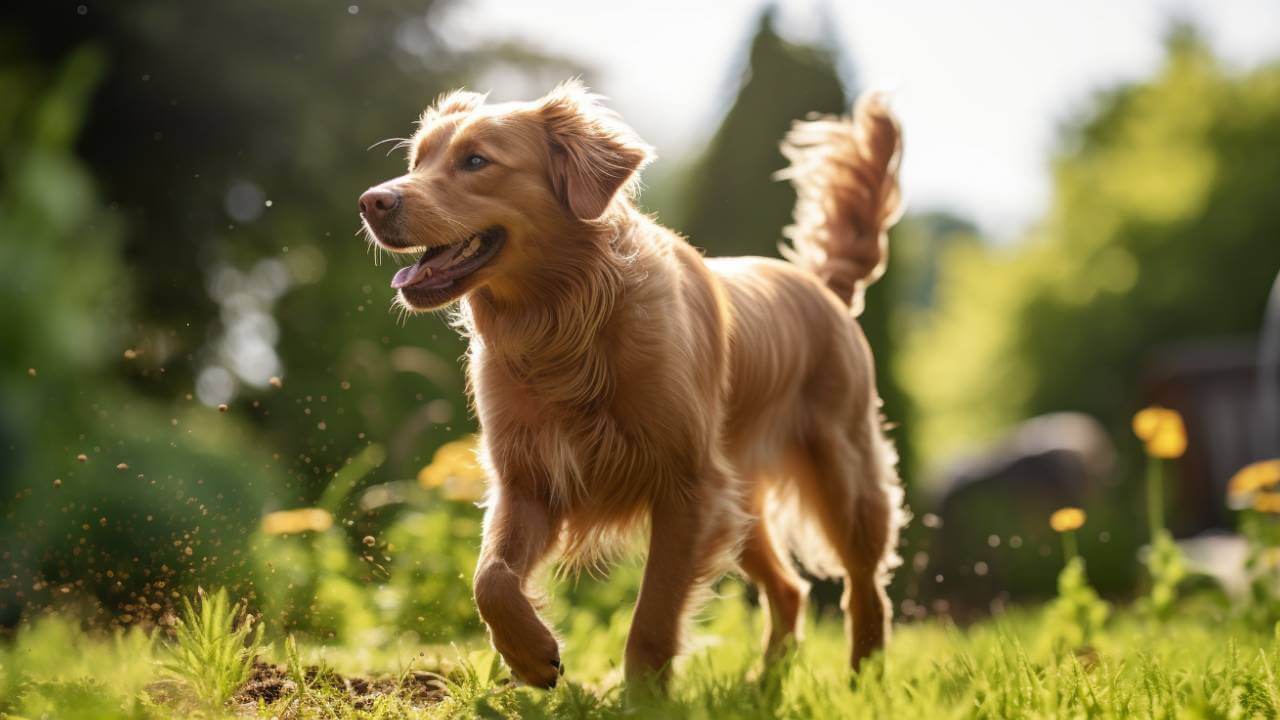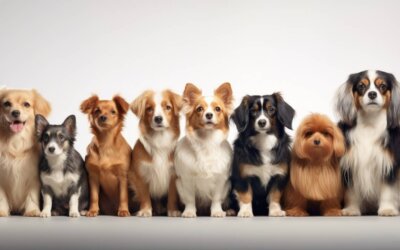Dogs have been our faithful companions for thousands of years, but there’s always more to learn about our four-legged friends. Tail movements in dogs are one of their most iconic and endearing behaviors.
It’s a universal sign that most people associate with happiness and excitement. However, there’s a lot more to it than meets the eye.
Why Do Dogs Wag Their Tails?
In a nutshell, dogs wag their tails to communicate their emotions and intentions to other dogs and humans. It’s their way of expressing themselves and connecting with us. While many assume that tail wagging always signifies happiness, it’s not simple.
The way a dog wags its tail, speed, and position convey different messages. Depending on the context, a wagging tail can indicate excitement, joy, fear, submission, or even aggression.
The Science Behind Dog Tail Wagging
To truly grasp the significance of dog tail wagging, we must investigate the science underlying this behavior. It’s not just a random, involuntary movement. Here are some key aspects to consider when Interpreting dog emotions.
Muscle Control
The tail extends a dog’s spine and comprises several muscles. These muscles give dogs incredible control over their tails, allowing them to move in various directions, positions, and speeds.
Communication
Dogs have evolved to communicate with each other and humans, and their tails are a vital part of this communication system. Tail movements can convey various emotions, intentions, and dog communication cues.
Neurological Signaling
The brain plays a central role in controlling a dog’s tail movements. Different emotions trigger specific neurological signals that instruct the tail muscles to move in a particular way.
Sensitivity to Emotions
Dogs are highly perceptive animals and can detect subtle changes in our emotions. They often mirror our feelings, and their tail wagging may respond to our mood.
Context Matters
The context in which a dog wags its tail is crucial for interpreting its meaning. For example, a slow wag with a lowered tail might signal submission or insecurity, while a fast wag with a raised tail often indicates excitement and happiness.
6 Dog Tail Positions and Their Meanings
Tail position communicates a lot about a dog’s mood, intentions, and behavior. Here are 6 common dog tail positions and what they mean.
The High and Stiff Tail
A dog holding its tail high and stiff often signals confidence, assertiveness, and even dominance. This posture is typically seen in alpha dogs and may be accompanied by raised hackles, showing that the dog is ready for action.
Being cautious around a dog with a high and stiff tail position is essential, as it may signify a territorial or potentially aggressive attitude.
The Tail Tucked Between the Legs
On the opposite end of the spectrum, a tail tucked tightly between a dog’s hind legs suggests fear, submission, or anxiety. This is a clear sign that the dog feels threatened or insecure. It’s crucial to approach such a dog with care and offer reassurance to help them feel more at ease.
The Playful and Wagging Tail
A tail held at a medium height and wagging vigorously is the classic sign of a happy and playful dog. A relaxed body posture often accompanies this tail position, indicating that your dog is excited and ready for fun. Enjoy those joyful moments with your furry friend!
The Slow, Subtle Wag
A slow, gentle wag usually suggests uncertainty or mild interest. This is commonly seen when a dog tries to assess a situation or another dog or person. Pay attention to other body language cues, as the dog might be cautious or curious, depending on the context.
The Side Wag
A dog wagging its tail to one side typically indicates curiosity or friendliness. This is often seen when a dog is greeting someone or something new. It’s a positive sign that the dog is open to interaction and is assessing the situation in a non-threatening manner.
The Rapid, Low Wag
A tail wagging rapidly from a low position, almost like a “helicopter tail,” strongly indicates excitement and anticipation.
This tail position is commonly observed when a dog is about to receive a treat, go for a walk, or engage in an enjoyable activity. It’s a clear sign that your dog is thrilled and eager.

Deciphering Canine Communication Cues
Understanding your dog’s tail is just one part of the larger puzzle of canine body language. Dogs communicate not only through their tails but also with their ears, eyes, body posture, and vocalizations. These are some additional cues to help you interpret your furry friend’s feelings:
Ears
Forward-facing ears generally indicate attentiveness and alertness, while ears pinned back could signify fear or submission.
Eyes
Dilated pupils may suggest excitement or arousal, while squinting or averting the gaze can signal discomfort or submission.
Body Posture
A relaxed body with a wagging tail typically indicates a happy and confident dog, while a stiff or hunched body suggests tension or anxiety.
Vocalizations
Different barks and growls can have distinct meanings. A high-pitched bark may indicate excitement, while a low growl could signify a warning or threat.
Conclusion
A dog’s tail is a powerful instrument of communication, conveying a spectrum of emotions and intentions. Understanding the nuances of tail positions and their meanings and decoding the broader language of canine communication cues enables us to build stronger, more empathetic bonds with our furry companions.

FAQ
How do I know if my dog is anxious when wagging its tail?
A low, slow tail wag can indicate a dog’s anxiety, which might be accompanied by other stress signals like lip licking or avoidance behavior. Pay attention to the overall context and body language to gauge your dog’s emotional state.
Are there breed-specific tail-wagging patterns?
While there are commonalities in tail language among breeds, each dog is an individual. Breed-specific variations exist, but understanding your unique dog’s tail language through observation and interaction is key.
What are the best ways to respond to a happy, wagging tail?
Respond with positivity and engagement! A happy, vigorous tail wag signals your dog’s excitement. Play, pet, or offer treats to reinforce the positive interaction and strengthen your bond.
How can I help a dog with a tucked tail regain confidence?
To boost your dog’s confidence, create a safe and nurturing environment. Gradual exposure to positive experiences and socialization can help your dog become more self-assured.
Can dogs communicate with their tails to other animals?
Dogs can use their tails to communicate not only with humans but also with other animals. Tail language is a universal form of communication in the animal kingdom.
Is it possible for a dog to have a medical issue if it can’t wag its tail?
A dog’s inability to wag its tail could indicate a medical issue, such as injury or pain in the tail area. If you notice changes in your dog’s tail movements, consult a veterinarian to rule out any underlying health problems.






I thought because he was happy to see me